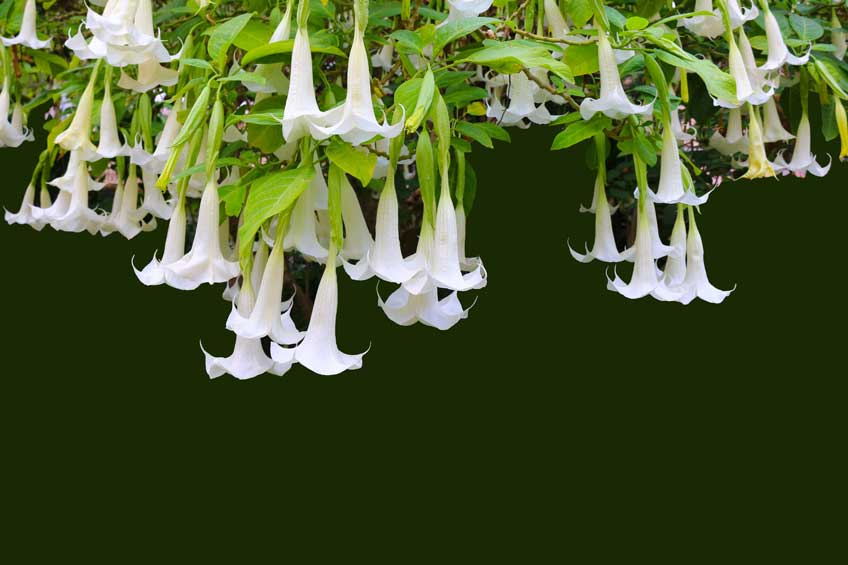
These beauties herald the warm weather with a loud blast of colour.
Trumpet flowers create impact with their size, profusion and hot colour tones. Not for gardeners who prefer soft romantic pastels, these subtropical stunners are for those who love bold brassy colour and want to create a ‘holiday-at-home’ feel. The trumpets in this band love the sun and their showy blooms appear all through summer, attracting bees and birds into the garden.
To ensure your garden is playing from a single song sheet, accompany the trumpets on these pages with dark and glossy gardenia, hippeastrum, spider lilies,
clumping bamboo, multi-coloured New Zealand flax, Abyssinian banana, clivia, evergreen magnolia, philodendron ‘Xanadu’, cordyline, and the perfect
companion to subtropical colour – the best trumpet of them all - frangipani!

Angel’s trumpets
Few plants have as many flowers as angel’s trumpet, Brugmansia. Each trumpet-shaped bloom is up to 20cms long, and they are borne in a massive
flush. In the peak of summer a single shrub can carry up to 500 blooms at one time! It’s a spectacular sight, usually accompanied by the noisy hum
of a legion of bees. Colours include lemon, peach, apricot, white and soft pinks. As a bonus most brugmansia are sweetly scented, especially in the
early morning and evening. After a brief rest, the plant surges into another growth spurt producing another enormous flush of flowers, a pattern which
is repeated all through summer and autumn.
Our brugmansia grows immensely over the season so we cut it back to a ‘knuckle’ at the top of a 1.5m trunk at winter’s end. This pruning keeps our tree
to one main trunk with a huge umbrella-shaped canopy. (It sprouts a few suckers from the base, which I remove and give to our Garden Clinic Club members
at our regular garden classes.) Brugmansia can also grow in large pots. You can trim them into an umbrella shape or let them do their own thing and
grow into a large multi-stemmed shrub. Keep in mind that all parts of this plant are toxic. Another downside is that the incredible number of fallen
blooms creates a never-ending chore sweeping them up if they’re near paving.
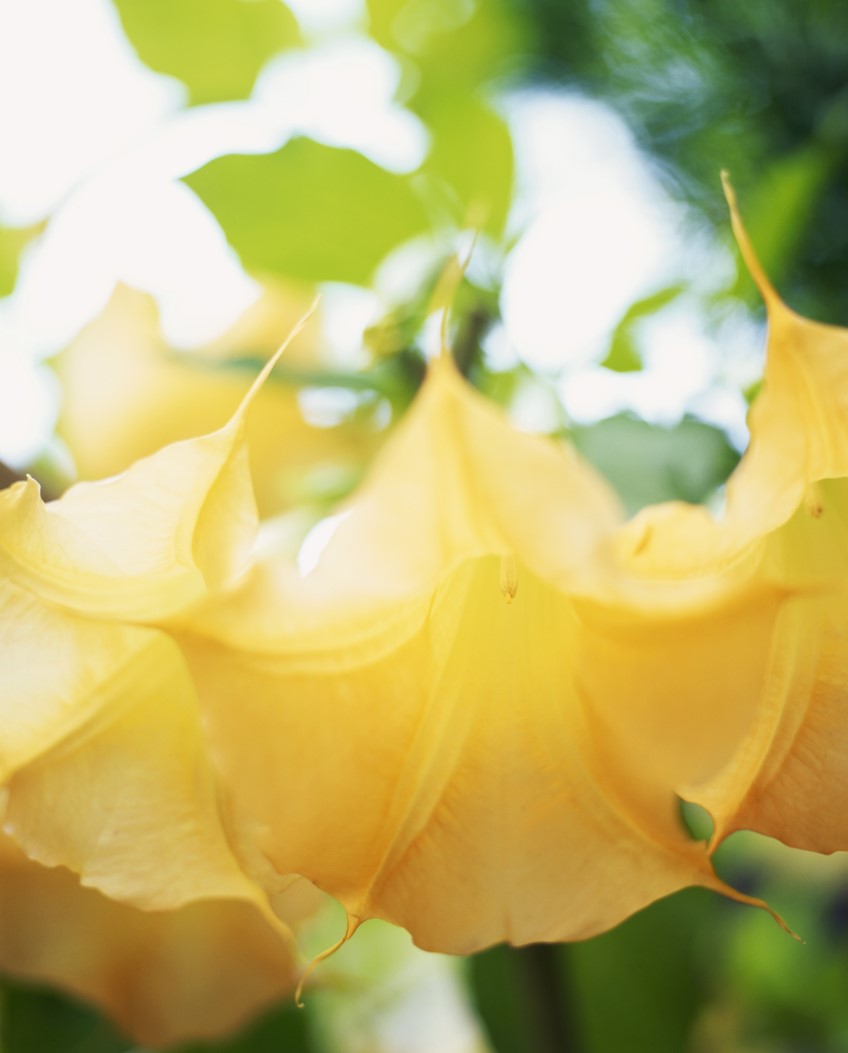
Angel's trumpet, Brugmansia. Photo - Gettyimages.com
Brazilian jasmine
These twining climbers produce trumpet flowers all through the warm months. The smaller-flowered forms, in colours of pink, red and white, are sometimes
known as dipladenia or mandevilla. The twining stems make them useful for decorating fences, railings, iron pillars and posts. They can also be trained
on tensioned wire on walls, up veranda posts, or around windows and doors. There’s a wall of ‘Alice du Pont’, trained on wires, on a house just around
the corner from me. It’s absolutely stunning, with lipstick-pink flowers and heavily textured foliage. ‘White Fantasy’ is another popular variety,
with prolific, pure white flowers. A friend of mine grows this trained on tensioned wire around her bedroom door, which opens onto a north-facing balcony.
The green and white perfectly frames her window. Look out for ‘Red Fantasy’ if you love deep crimson red. Brazilian jasmine is happy in a pot and does
best given a full day of sunshine.
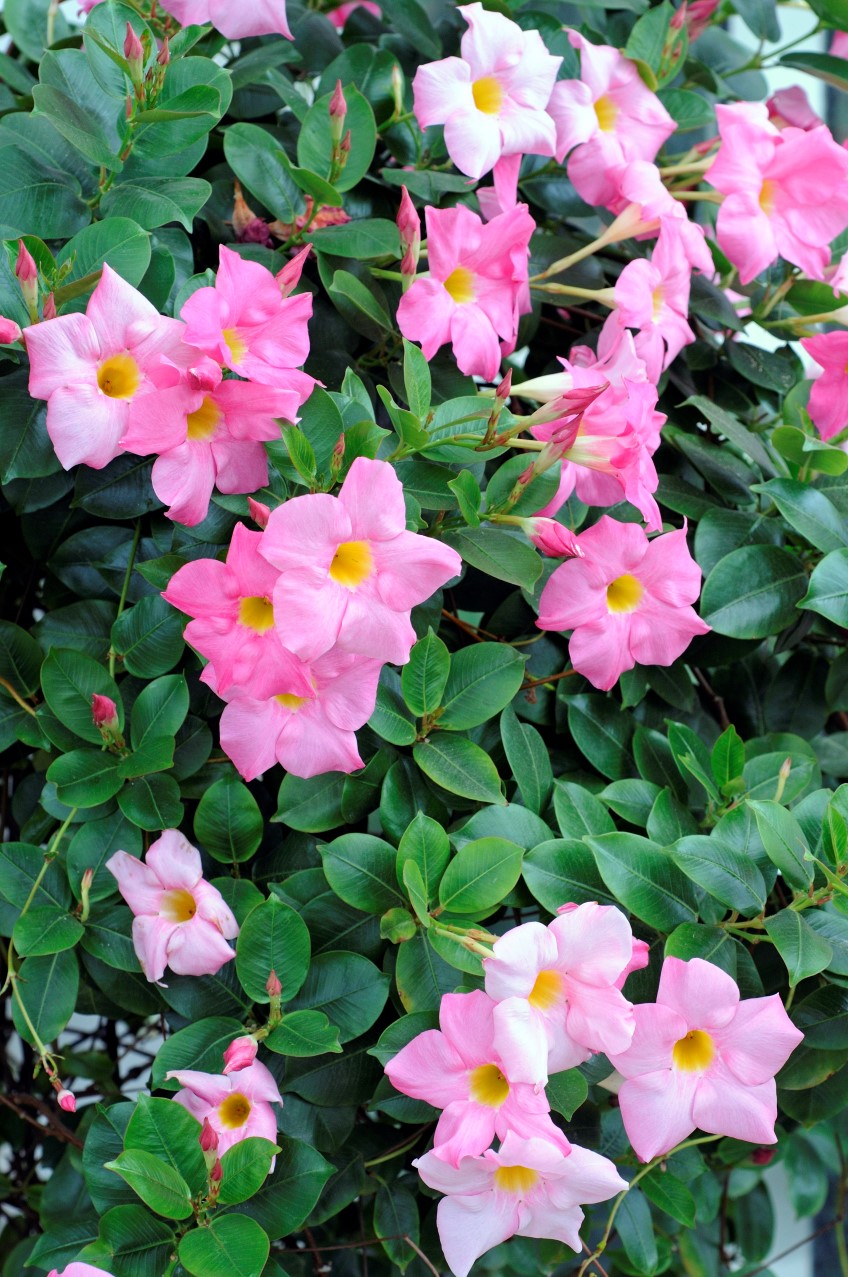
Brazilian jasmine, mandevilla, is a neat twining climber. Photo - Library/Gettyimages.com
Golden trumpet
Allamanda is a spectacular climber with large, scented, bright yellow trumpet flowers, hence its common name, golden trumpet. The foliage is green and
glossy so makes a good background for its flowers, which extend from November to May. Vigorous growth demands heavy pruning in spring to shape the
plant and to encourage the flowers, which are pollinated by long-tongued moths. In its native South America allamanda is pollinated by hummingbirds
and I was lucky enough to watch this happen in an estancia outside Buenos Aires on one of our Ross Garden tours to South America. Allamanda will smother
an ugly paling fence with foliage and flower and can also be grown as a strong hedge for privacy screening. I’ve seen spectacular plants on chain wire
fences in Cairns, dripping with flowers. Allamanda can also be trained on a trellis or arbour; or espaliered against a wall. It prefers a tropical
or sub-tropical climate so is best for warm coastal gardens.
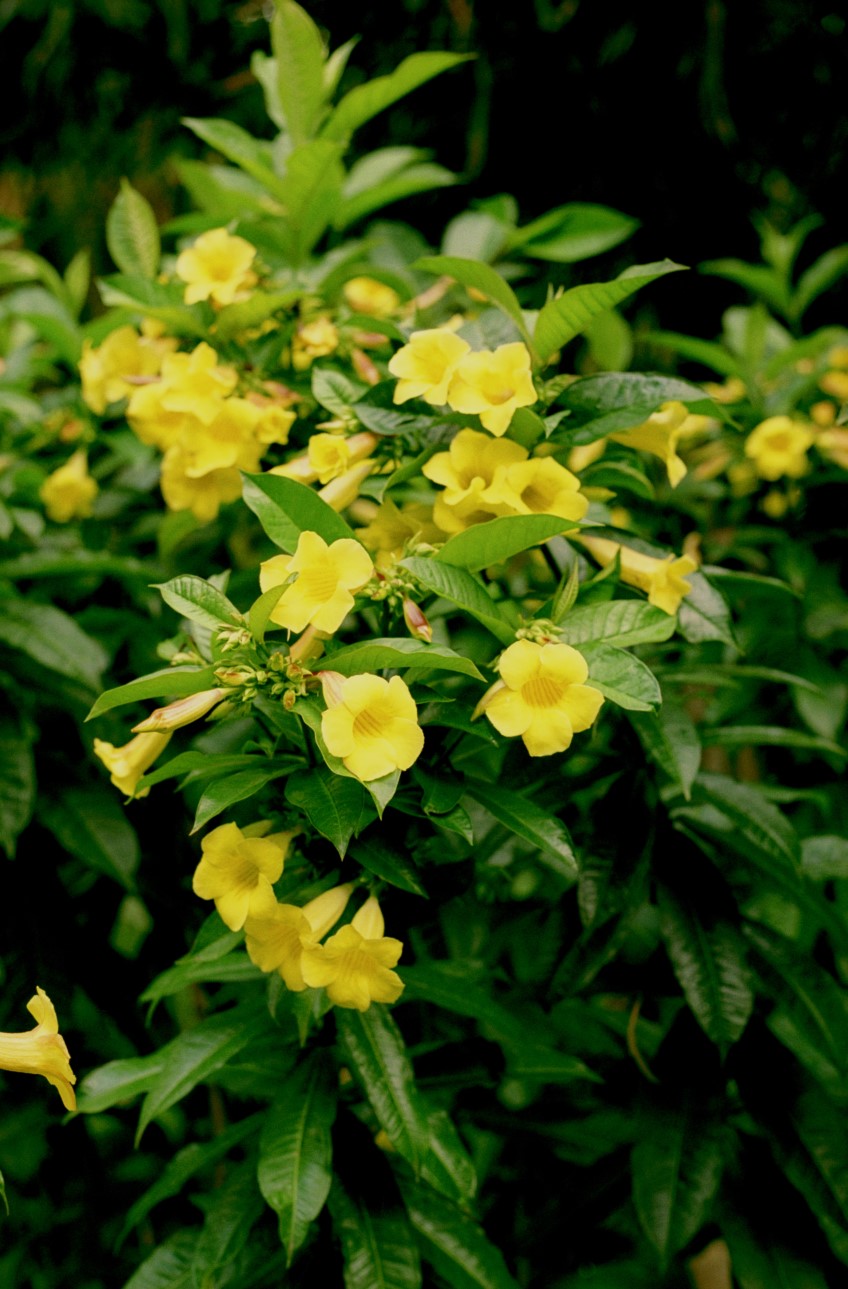
Golden trumpet, Allamanda. Photo - Janet Johnson/Gettyimages.com
Summer lilies
Oriental and Asiatic lilies produce sprays of trumpet flowers on tall stems. Asiatic liliums are shorter than Orientals, with upward-facing flowers in
a range of warm colours, while Oriental lilies tend to have downward-facing flowers, and knock-out fragrance. Liliums grow from relatively cheap bulbs
planted in spring. Gentle morning sunshine encourages good flowering. All liliums grow well in pots. They disappear under ground after flowering and
will reappear next spring, as a self-reliant addition to your garden. I’ve been growing the tall white November lilies (Lilium longiflorum) for about 20 years. The clump is now massive beneath a huge frangipani, which protects the plants from hot summer sun.
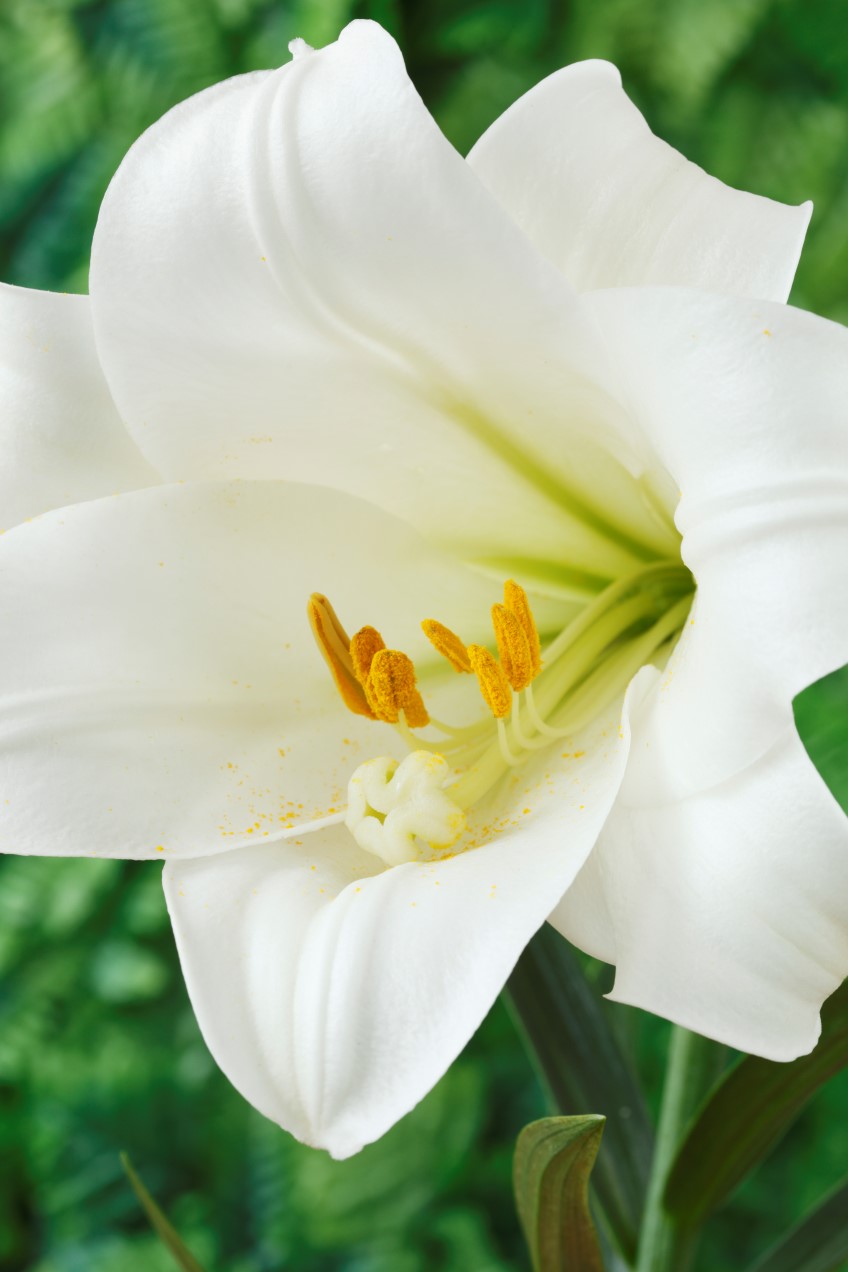
November lily, Lilium longiflorum. Photo - Chris Burrows/Gettyimages.com
Calla Lily
Calla lily is a type of arum lily (Zandedeschia). The funnel-shaped flowers are beautiful both in the garden and in a vase. The deep green broad leaves,
sometimes flecked with white, are also attractive. Calla lilies grow into large clumps if left undisturbed. They love a moist spot with full sun or
part shade. ‘Fairy Floss’ is a blush-pink to 70cms, ‘Apricot Blush’ grows to 60cms with apricot blooms and white-speckled foliage. ‘Green Goddess’
is a well-known member of the group and grows well in moist conditions, getting to 1m tall with large cream flowers edged in green. The callas make
a long lasting cut flower, and are often used in bridal bouquets.
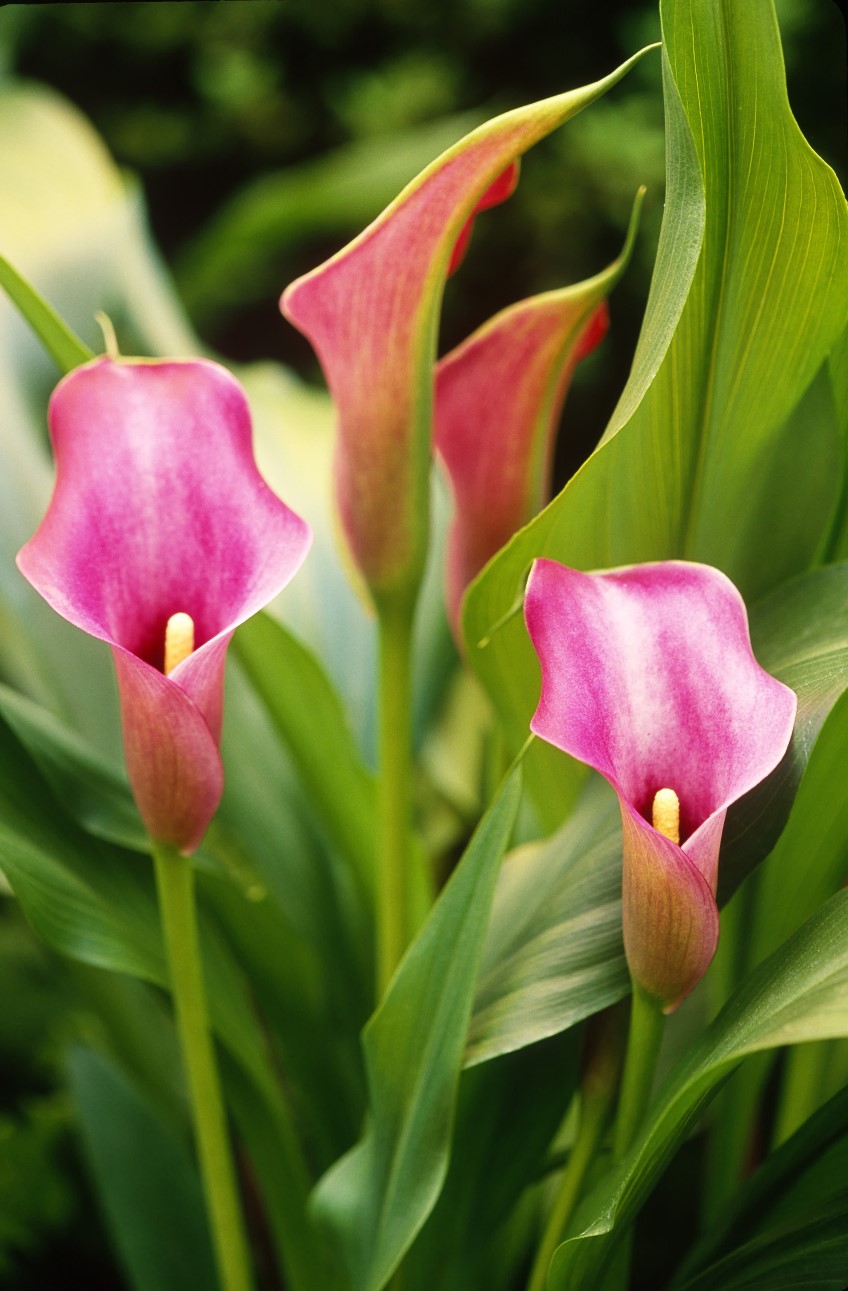
Calla lily, Zandedeschia. Photo - Adam Jones/Gettyimages.com
Trumpet creeper
This flamboyant climber, whose botanic name is Campsis, has bright terracotta, flared trumpet flowers in summer. Each flower is fairly large (8cms)
but it’s the profusion that really impresses. The flowers are filled with honey and attract nectar-feeding birds. The feathery deciduous leaves are
also noteworthy. Campsis is ideal for growing over a pergola, or on walls and fences as it uses its aerial roots to cling to its support.
It loves a sunny spot. In cool areas late frost can cause damage so delay pruning until the threat of frost has passed. A downside is a minor tendency
to suckering growth. Reduce the risk by limiting digging near the root zone, and remove suckers that do appear soon as possible.
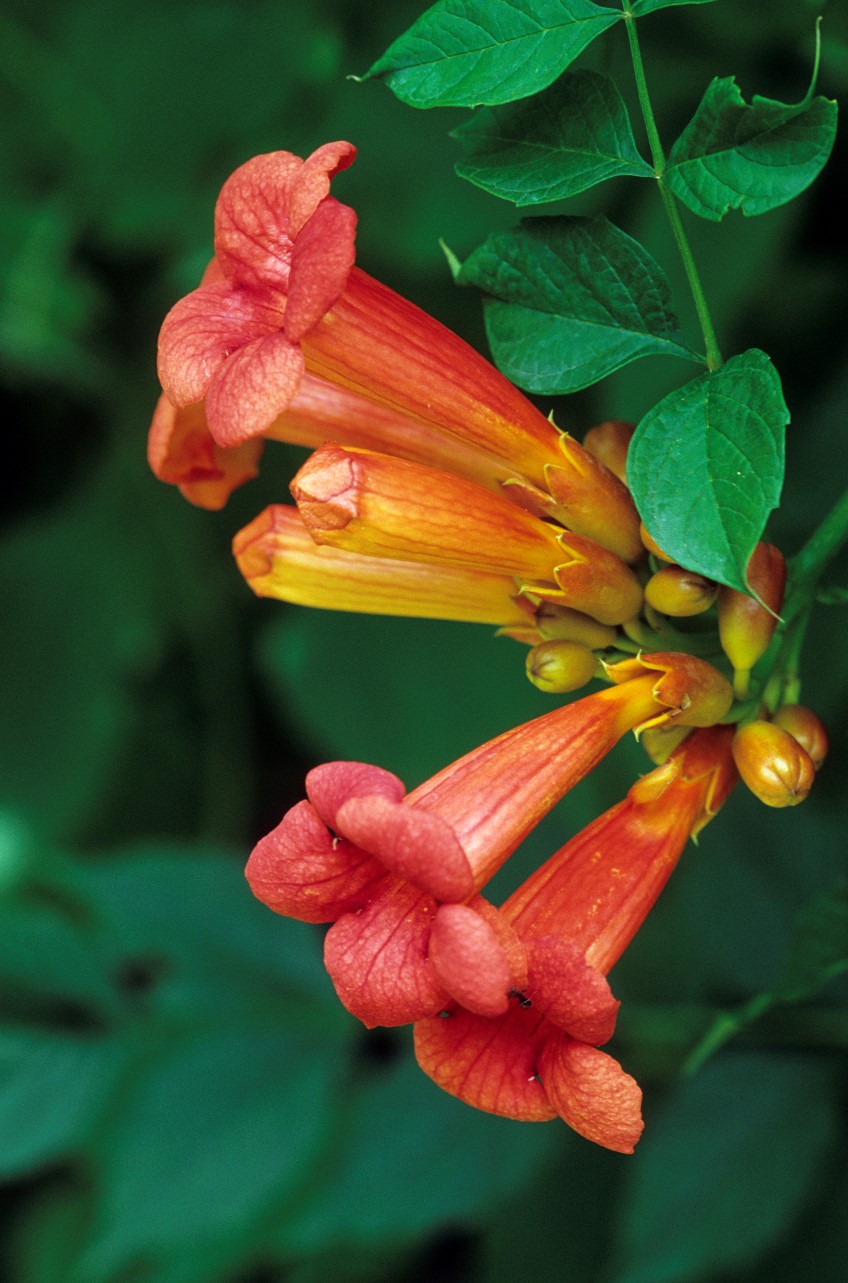
Trumpet creeper, Campsis. Photo - Ed Reschke/Gettyimages.com
Where to buy
Brugmansia
Sacred Garden Frangipani
Phone: (07) 4097 0065
www.sacredgardenfrangipanis.com
Summer lillies
Van Diemen Quality Bulbs
Phone: (03) 6442 2012 www.vdqbulbs.com.au
Calla and arum lilies
Nutshell Perennial Nursery and Plant Farm
Phone: (02) 6943 2623www.nutshellnursery.com.au
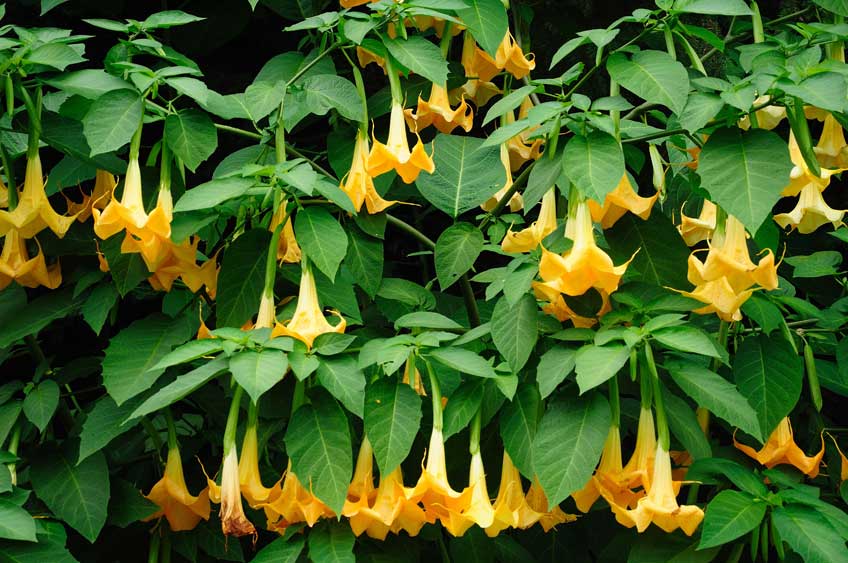
Text: Sandra Ross